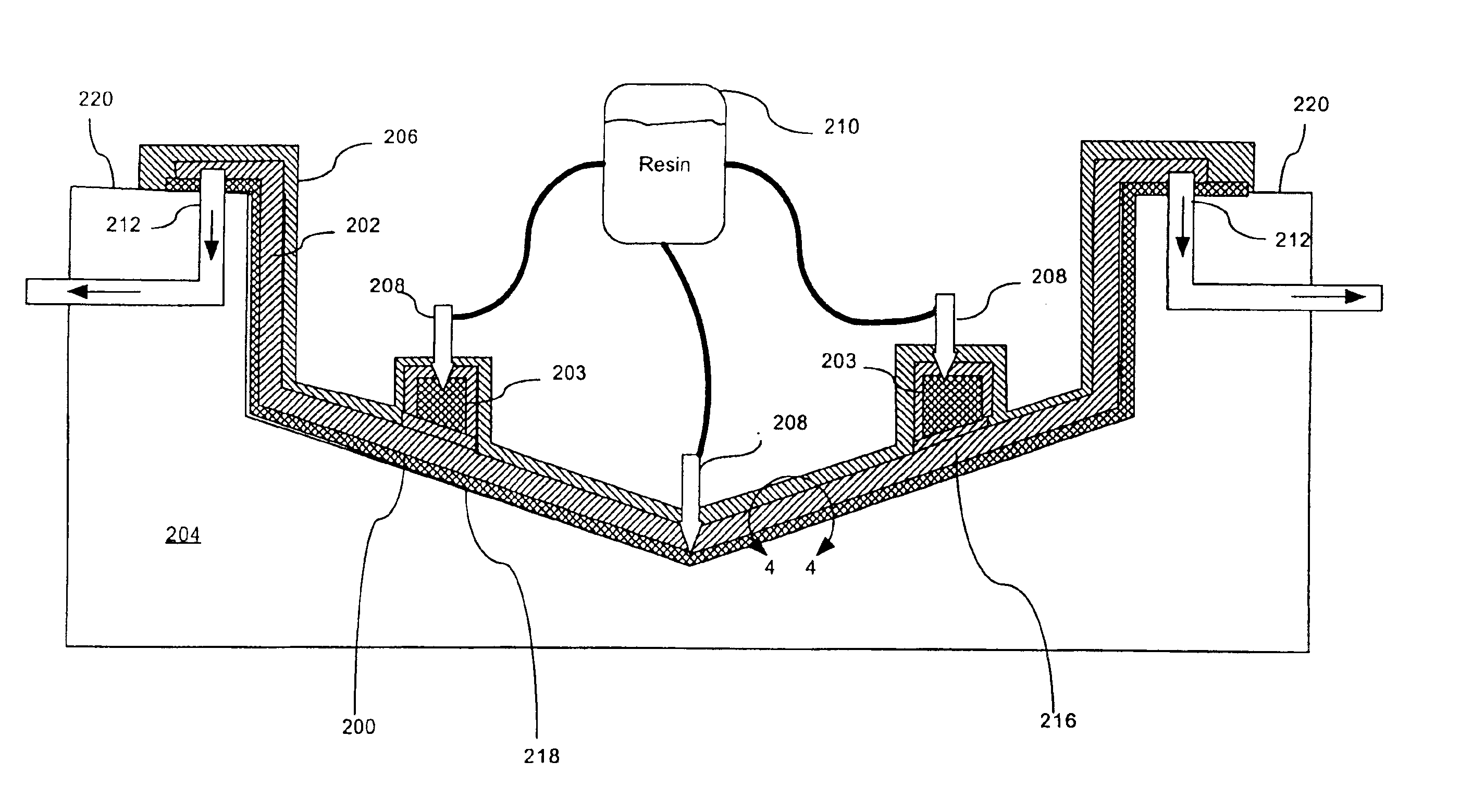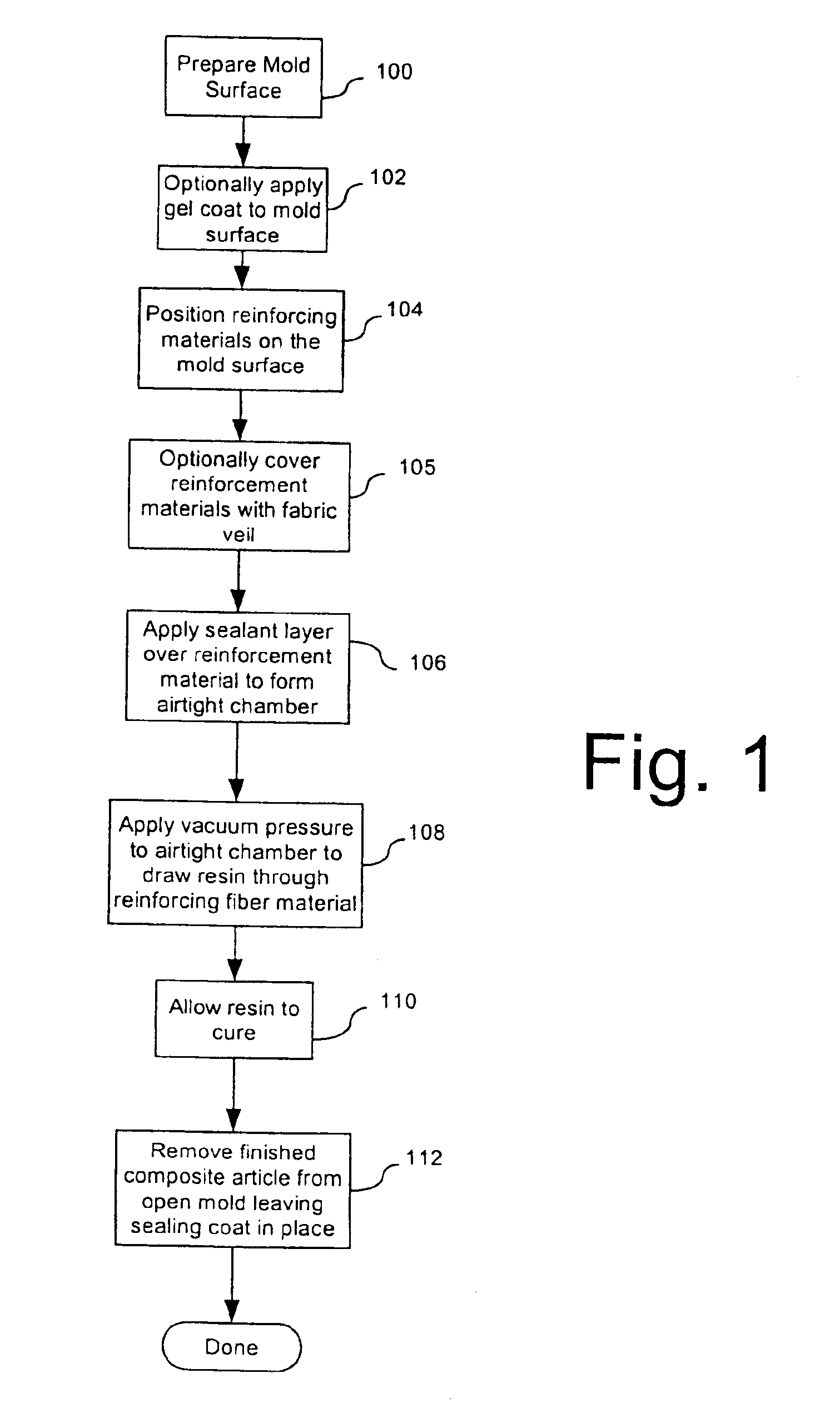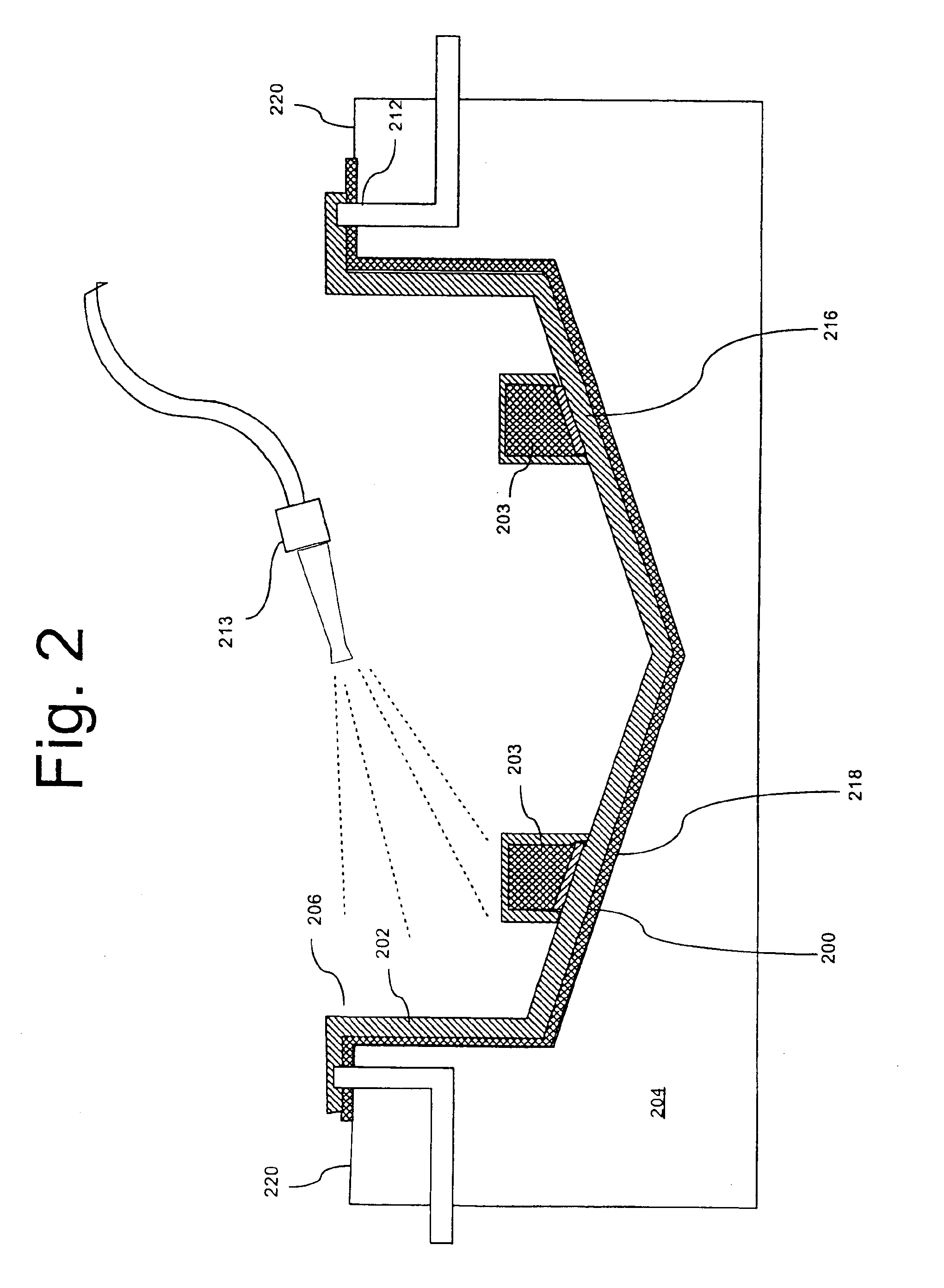Curable liquid sealant used as vacuum bag in composite manufacturing
a liquid sealant and composite manufacturing technology, applied in the field of composite manufacturing process, can solve the problems of large amount become too expensive, and emitted large amounts of hazardous air pollutants, and achieve the effects of improving chemical resistance, moisture resistance, abrasion resistance, and UV light resistan
- Summary
- Abstract
- Description
- Claims
- Application Information
AI Technical Summary
Benefits of technology
Problems solved by technology
Method used
Image
Examples
Embodiment Construction
FIG. 1 is a flow chart that shows a process for vacuum assisted resin transfer molding (VARTM) according to the inventive arrangements. The process will be described relative to the cross-sectional view of a mold assembly in FIG. 2. The composite part in FIG. 2 is a boat hull, but it will be readily appreciated by those skilled in the art that the invention is not so limited.
The process preferably begins in step 100 with the preparation of the mold 204. Mold 204 is preferably an open face mold in which the mold surface 218 has a shape that is consistent with a desired composite part to be formed using the process. A flange 220 is preferably provided at the outer periphery of the mold 204. It can be desirable to prepare the mold surface 218 using conventional methods, such as treating the mold surface with wax or the like. However, the invention is not limited in this regard and any other suitable process can be used to prepare the mold 204.
Once the mold surface 218 has been properly...
PUM
| Property | Measurement | Unit |
|---|---|---|
| thickness | aaaaa | aaaaa |
| viscosity | aaaaa | aaaaa |
| vacuum pressure | aaaaa | aaaaa |
Abstract
Description
Claims
Application Information
 Login to View More
Login to View More - Generate Ideas
- Intellectual Property
- Life Sciences
- Materials
- Tech Scout
- Unparalleled Data Quality
- Higher Quality Content
- 60% Fewer Hallucinations
Browse by: Latest US Patents, China's latest patents, Technical Efficacy Thesaurus, Application Domain, Technology Topic, Popular Technical Reports.
© 2025 PatSnap. All rights reserved.Legal|Privacy policy|Modern Slavery Act Transparency Statement|Sitemap|About US| Contact US: help@patsnap.com



